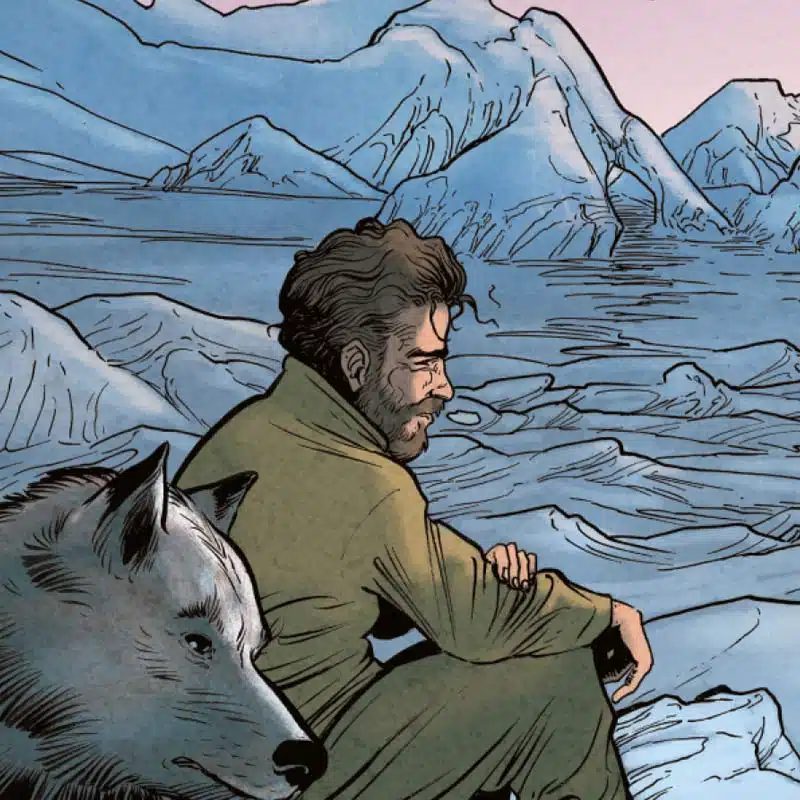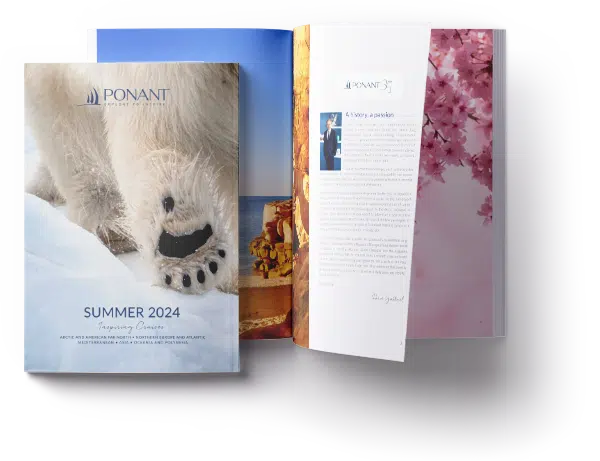A legacy of peoples and poles
There are encounters that can determine the course a life will take. One such is the encounter that occurred between the young up-and-coming ethnologist Paul-Émile Victor and the illustrious explorer Jean-Baptiste Charcot. Cécile Manet, a PONANT naturalist guide specialising in the history of the great explorers, gives us an insight into the career of this man with a passionate interest in the polar regions.
Initial expeditions to Greenland
Victor’s tenacity and strength of conviction won over Jean-Baptiste Charcot, who saw in him a natural successor to himself. “Mon p’tit, je vous emmène” (“I’ll take you, my boy”), he is said to have persuasively announced as he took the ethnologist aboard his legendary three-master Le Pourquoi Pas ?, alongside anthropologist and doctor Robert Gessain, geologist Michel Pérez and film-maker Fred Matter. When he landed in Angmagssalik, Greenland, he worked together with the local populations, which gave him an initial insight into the issues involved in preserving their way of life.
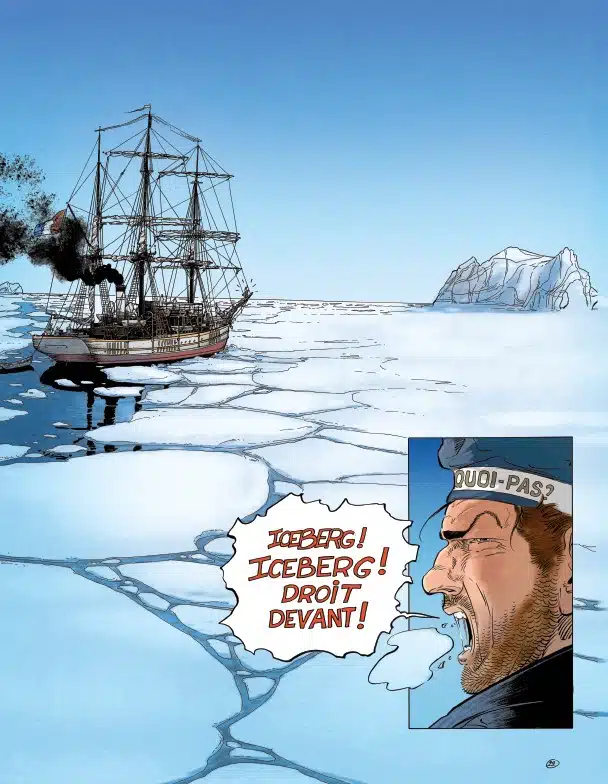
Illustration from the comic strip Paul-Émile Victor, la soif d’aventure, 1905-1937, by S. Dugast, S. Niveau, L. Seigneuret and F. Fleury, published by Sekoya in March 2024.
What motivated Victor above all was learning about the Inuit peoples – at the time, he was still using the term ‘Eskimo’. He wanted to immerse himself in their culture and discover their way of life and their relationship with nature.
Immersed with the Inuit
The French explorer had an intensive experience of Inuit culture lasting 14 months, in extreme and often hostile conditions. He lived with around thirty people in rudimentary accommodation and fell in love with a young woman called Doumidia, with whom he was involved for several years: “An Eskimo among Eskimos”, as he would later describe in his books. The local people, who had great difficulty pronouncing his name, affectionately referred to him as ‘Wittou’. He spoke in the Greenlandic he’d learnt on previous trips, and when that wasn’t enough to make himself understood, he used gestures.
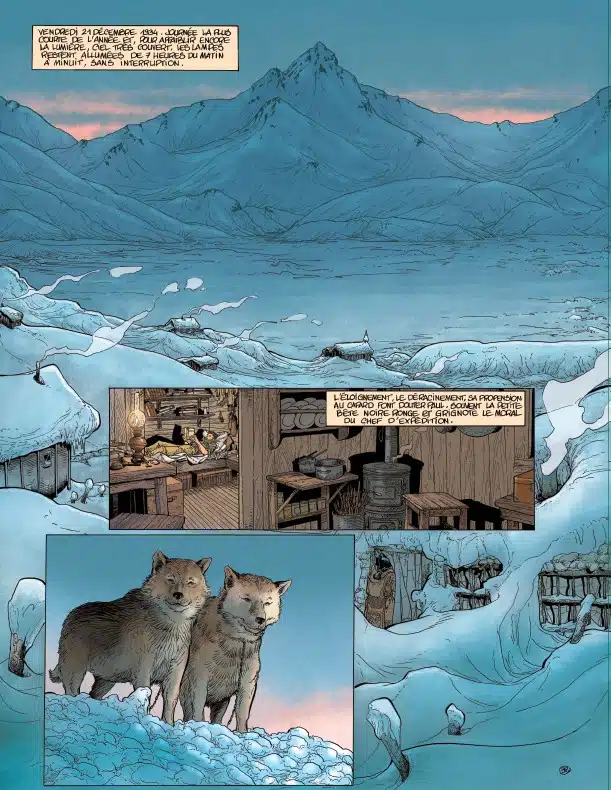
Illustration from the comic strip Paul-Émile Victor, la soif d’aventure, 1905-1937, by S. Dugast, S. Niveau, L. Seigneuret and F. Fleury, published by Sekoya in March 2024.
Gathering and sharing knowledge
Victor managed to capture the essence of these lands through his many writings, photographs and drawings, and through items collected during this period. He returned with an in-depth study of these peoples and put together an invaluable collection of 4,000 ethnographic items. The detailed cartography forming part of his work has also contributed to further research into the geographical features of Greenland. In biological terms, his meticulously collected samples of flora and fauna are invaluable.
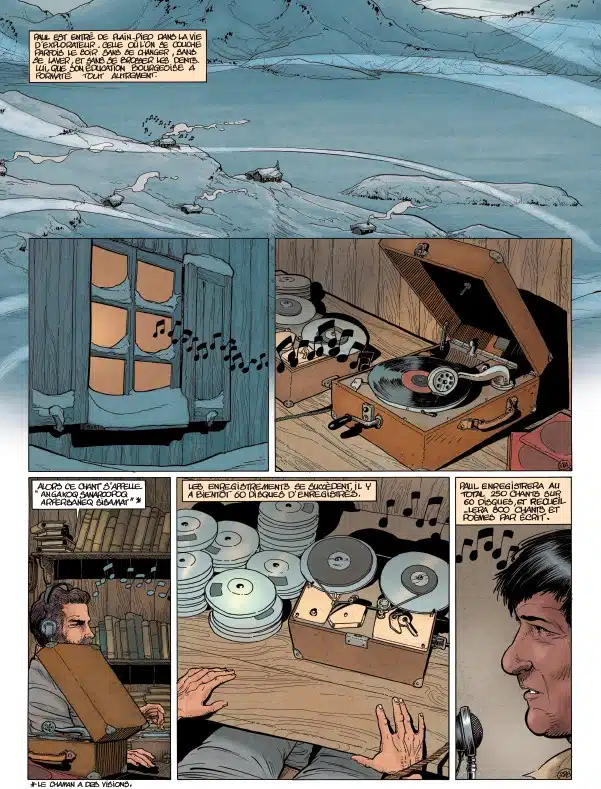
Illustration from the comic strip Paul-Émile Victor, la soif d’aventure, 1905-1937, by S. Dugast, S. Niveau, L. Seigneuret and F. Fleury, published by Sekoya in March 2024.
The architect of France’s great polar adventure
In 1947, in the aftermath of the Second World War, during which he put his flying skills to work for the US Air Force while at the same time also introducing troops to the Arctic territories, Victor played a part in setting up Expéditions Polaires Françaises (EPF). The organisation, which he headed until 1976, was the first to be entirely dedicated to raising public and private funding for scientific research and exploration in the polar regions. It allowed a new series of French expeditions to be undertaken to Greenland and Adélie Land (Antarctica) from the following year onwards. Numerous long-distance polar treks and overwintering expeditions would also be undertaken, enabling the establishment of permanent scientific bases in wild, untamed lands.
Paul-Émile Victor: 6 key dates
1934: organisation of his first ethnographic expedition to the east coast of Greenland thanks to his decisive encounter with Jean-Baptiste Charcot.
1936: crossed the ice cap from west to east with 3 other explorers. On arrival, he spent 14 months living with the Inuit at Kangerlussuatsiaq.
1940: mobilised in the French navy during the Second World War.
1947-1976: creation and direction of Expéditions Polaires Françaises (EPF).
1977: settles in Polynesia. There he writes his memoirs and continues his commitment to environmental conservation.
Photo credits: ©Editions du Sekoya mars 2024


